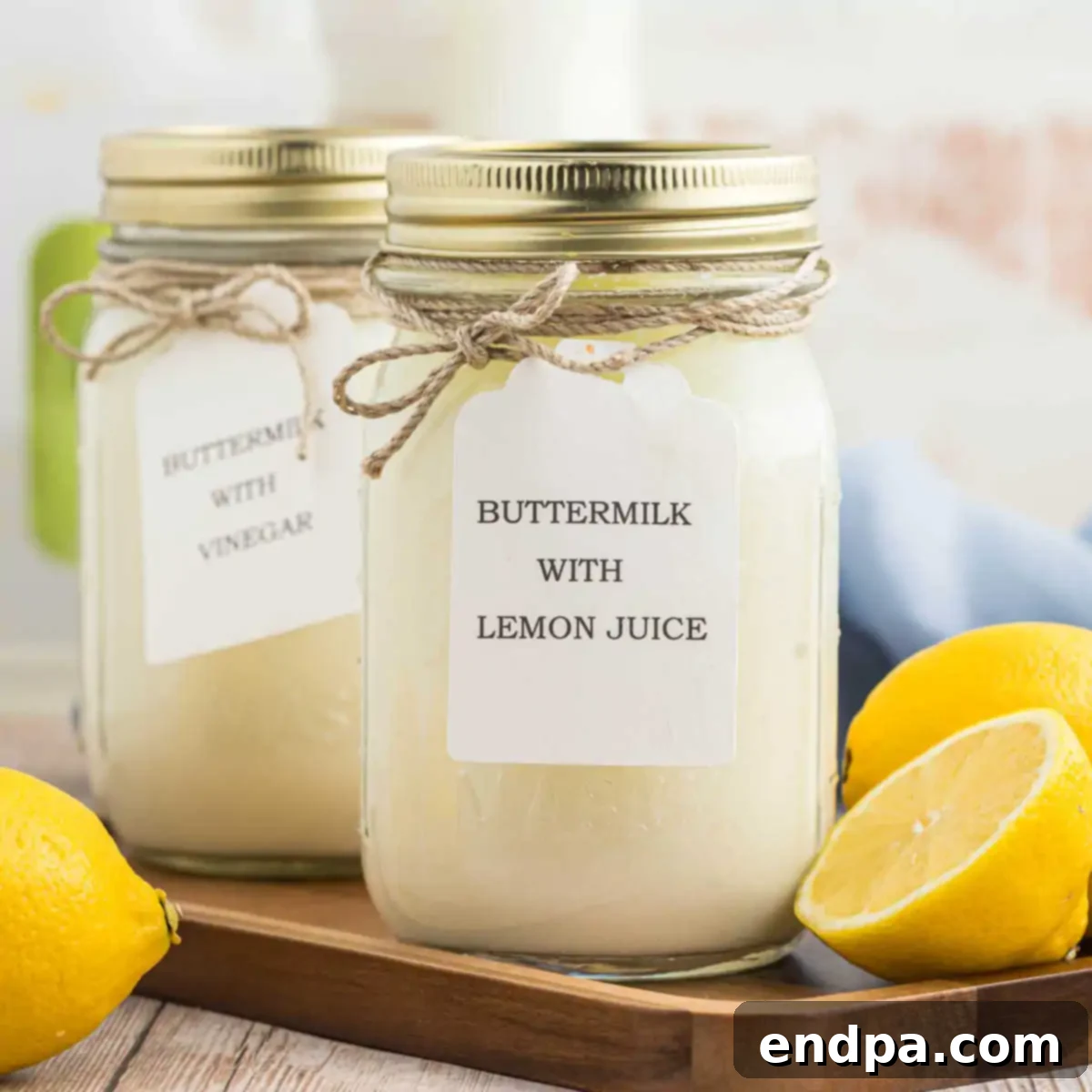Buttermilk, with its distinctive tangy flavor and wonderfully smooth texture, stands as a versatile and beloved dairy product in kitchens around the globe. Far more than just a liquid byproduct, it’s a culinary staple that transforms ordinary recipes into extraordinary delights. But what exactly is buttermilk, and why is it so indispensable for bakers and cooks alike?
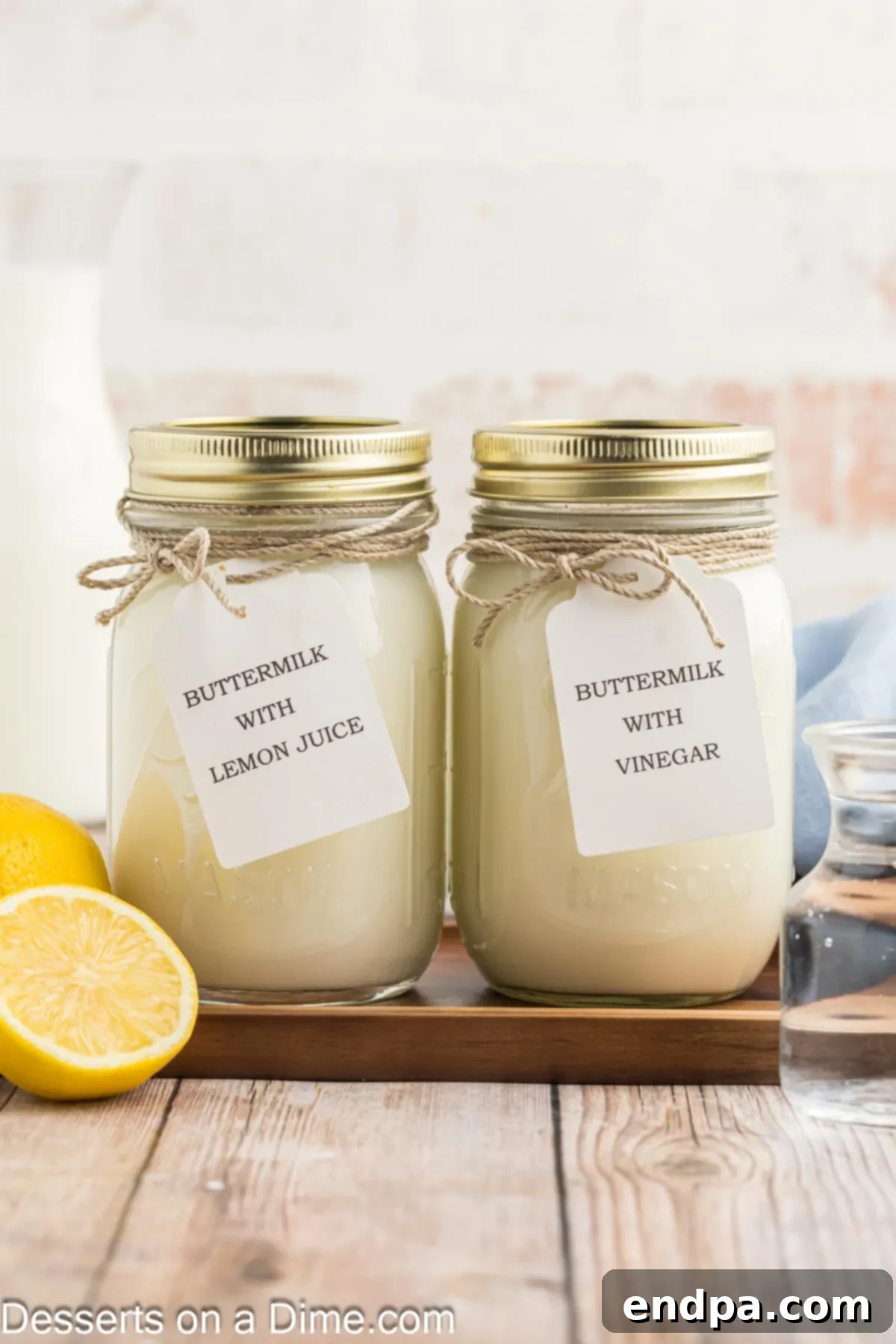
If you’ve ever encountered an ingredient list requiring buttermilk, you might have paused, perhaps wondering about its origins or if it’s something you can easily conjure up in your own kitchen. The good news is, you absolutely can! This comprehensive guide will answer all your questions, demystifying buttermilk and empowering you to harness its incredible potential.
From decadent Texas Sheet Cake Bites and moist Red Velvet Pound Cake to the ethereal Best Vanilla Cupcake Recipe, buttermilk is often the secret ingredient that elevates texture and flavor. Beyond sweets, it’s essential for creating incredibly tender homemade ranch dressing, perfectly crispy Fried Chicken, and famously flaky buttermilk biscuits. Its acidic nature reacts beautifully with leavening agents, ensuring light, airy, and consistently delicious results every time.
Prepare to unlock the magic of buttermilk. You’ll be amazed not only by its transformative power in your cooking but also by how incredibly simple it is to prepare a fresh batch right in your home kitchen.
Table of contents
- What is Buttermilk?
- Why Use Buttermilk in Cooking and Baking?
- Ingredients You Need to Make Buttermilk
- How to Make Buttermilk
- Tips for Perfect Homemade Buttermilk
- Buttermilk Substitutes
- Frequently Asked Questions
- Recipes with Buttermilk
What is Buttermilk?
Historically, buttermilk referred to the thin, slightly tart liquid left behind after churning butter from cream. This traditional buttermilk was naturally low in fat, containing beneficial bacteria that contributed to its signature tang. However, the buttermilk commonly found in grocery stores today, and the kind we typically replicate at home, is known as “cultured buttermilk.”
Modern cultured buttermilk is produced by introducing specific lactic acid bacteria cultures into low-fat or skim milk. These bacteria ferment the milk sugars (lactose), converting them into lactic acid. This process is responsible for buttermilk’s characteristic slightly sour taste, thickened consistency, and increased acidity. The fermentation process breaks down milk proteins, creating a product that is not only flavorful but also incredibly versatile in culinary applications.
This distinct acidity is a defining characteristic and a key reason for buttermilk’s widespread use. It provides a unique flavor profile that brightens dishes and reacts chemically with leavening agents like baking soda and baking powder, leading to remarkably light and airy results in baked goods. Its thick, yogurt-like texture also contributes to a creamier mouthfeel in dressings, marinades, and sauces.
Beyond its culinary benefits, buttermilk also boasts some nutritional advantages. It’s typically lower in calories and fat than whole milk, yet rich in essential nutrients, including calcium, potassium, and vitamin B12. This makes it a smart choice for those seeking both flavor and health benefits.
Understanding these fundamental characteristics reveals why buttermilk is so much more than just a dairy drink – it’s a vital ingredient for achieving certain textures and flavors that other dairy products simply cannot replicate.
Why Use Buttermilk in Cooking and Baking?
Buttermilk’s magic lies in its unique properties, which deliver superior results across a wide range of recipes:
- Unrivaled Tenderness: The acidity in buttermilk works to tenderize proteins, whether in flour or meat. In baked goods, this means a softer crumb and more delicate texture. For marinades, it helps break down tough fibers in chicken or pork, resulting in incredibly juicy and tender meat.
- Exceptional Leavening: Buttermilk’s acidity is crucial for activating baking soda. When combined, they produce carbon dioxide bubbles, which are trapped in the batter, causing cakes, muffins, pancakes, and biscuits to rise beautifully and become wonderfully light and fluffy. Without buttermilk, many recipes relying on baking soda would fall flat.
- Enhanced Flavor Profile: The tangy, slightly sour note of buttermilk adds a depth of flavor that balances sweetness in baked goods and cuts through richness in savory dishes. It imparts a subtle complexity that makes dishes more vibrant and appealing.
- Moisture and Creaminess: Its thicker consistency contributes to a richer, moister final product. In dressings, it creates a luscious, creamy base. In baked goods, it helps retain moisture, ensuring they stay fresh and delicious for longer.
- Versatility: From sweet to savory, buttermilk can do it all. It’s a foundational ingredient for classic comfort foods and gourmet dishes alike, proving its adaptability in any kitchen.
These benefits highlight why buttermilk isn’t just an optional addition but often a fundamental component for achieving desired outcomes in many traditional and contemporary recipes.
Ingredients You Need to Make Buttermilk
Creating homemade buttermilk is surprisingly simple and requires just two basic ingredients you likely already have on hand. The key is the interaction between a dairy base and an acidic component.

- Milk: For optimal results, use whole milk or low-fat milk. While skim milk can work, the slightly higher fat content in whole or low-fat milk will yield a richer, creamier texture closer to store-bought buttermilk. Avoid using ultra-pasteurized milk if possible, as it sometimes struggles to curdle effectively.
- Lemon Juice or Vinegar: These are your acidic agents.
- Lemon Juice: Freshly squeezed lemon juice is preferred for the best flavor, offering a bright, natural tang.
- Vinegar: White vinegar is a neutral option that won’t impart strong flavors. Apple cider vinegar can also be used and adds a subtle fruity note, which can be pleasant in certain recipes.
The standard ratio is 1 tablespoon of acid per 1 cup of milk. Adjust this ratio slightly if you prefer a more pronounced tang or if your milk is particularly fresh and needs a bit more encouragement to curdle.
How to Make Buttermilk
Making homemade buttermilk is an incredibly straightforward process that takes mere minutes of active time and a short wait. Follow these simple steps to prepare your own fresh batch:
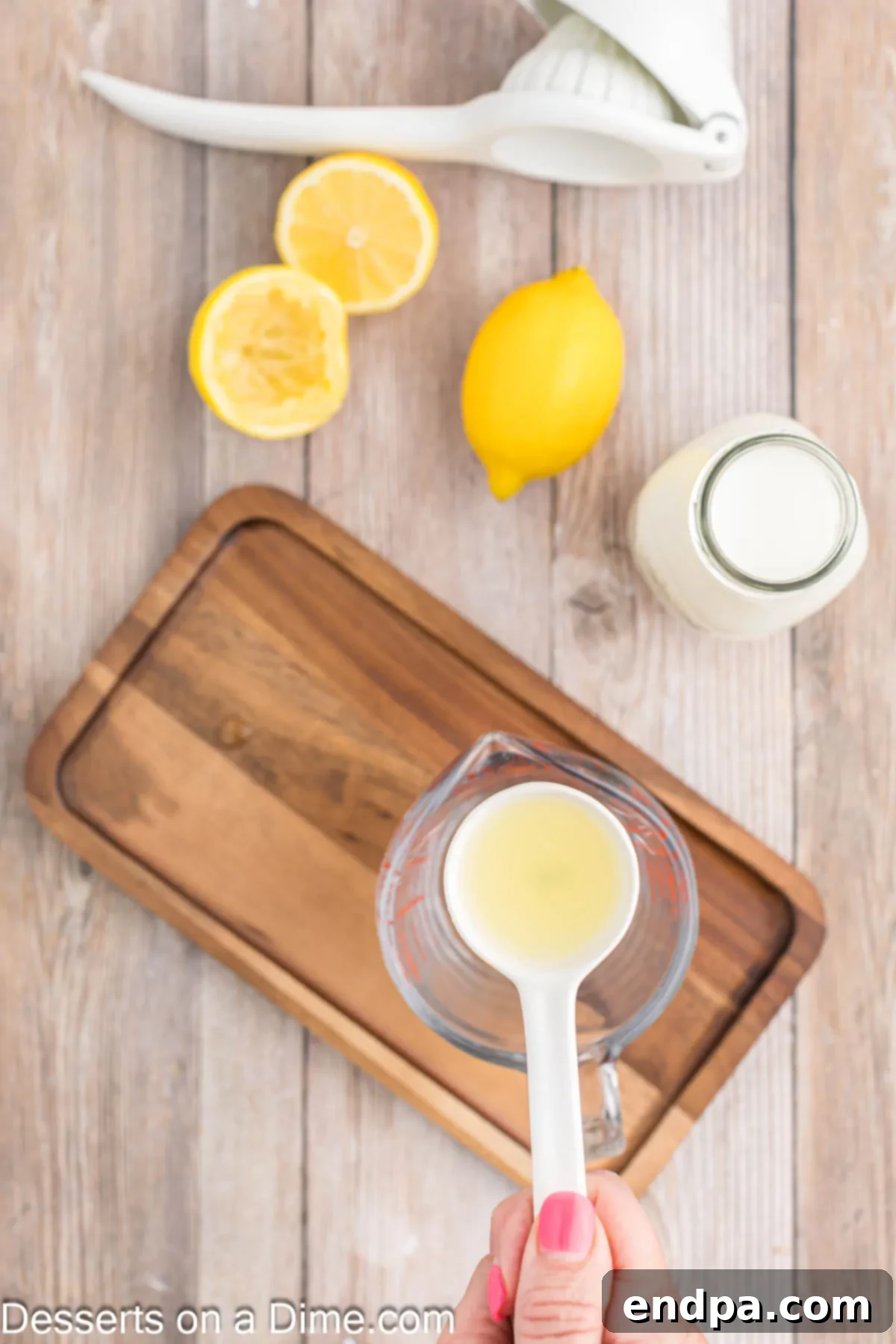
Step 1. Prepare Your Acid: Begin by pouring 1 tablespoon of your chosen acidic agent – either fresh lemon juice or vinegar (white or apple cider) – into a liquid measuring cup. Ensure you are using a clean measuring cup that can hold at least 1 cup of liquid for easy mixing.
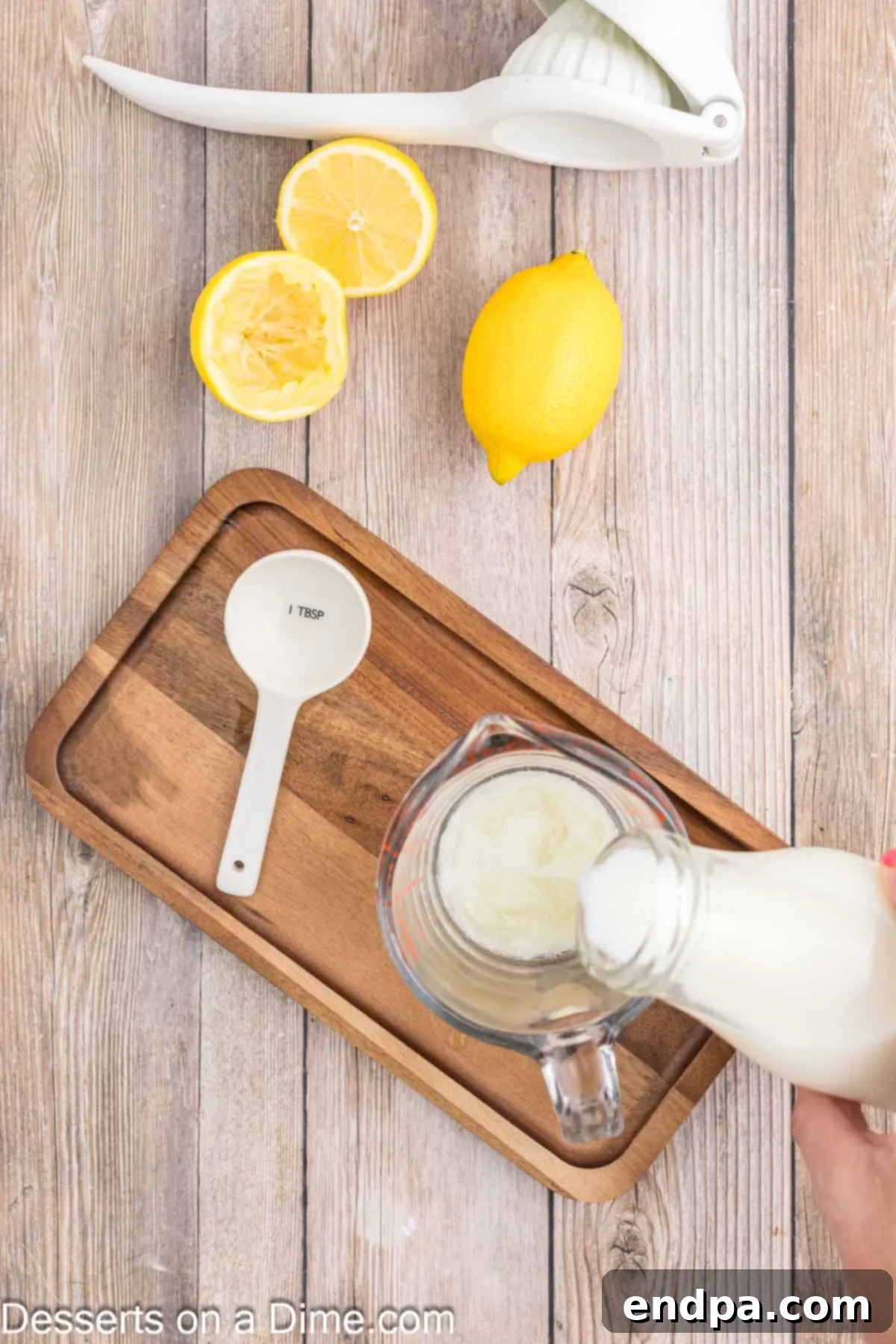
Step 2. Add the Milk: Carefully add milk to the measuring cup, filling it up to the 1-cup mark. This means you will have 1 cup of liquid total, with the acid making up the initial tablespoon. The acid will immediately begin to react with the milk proteins.
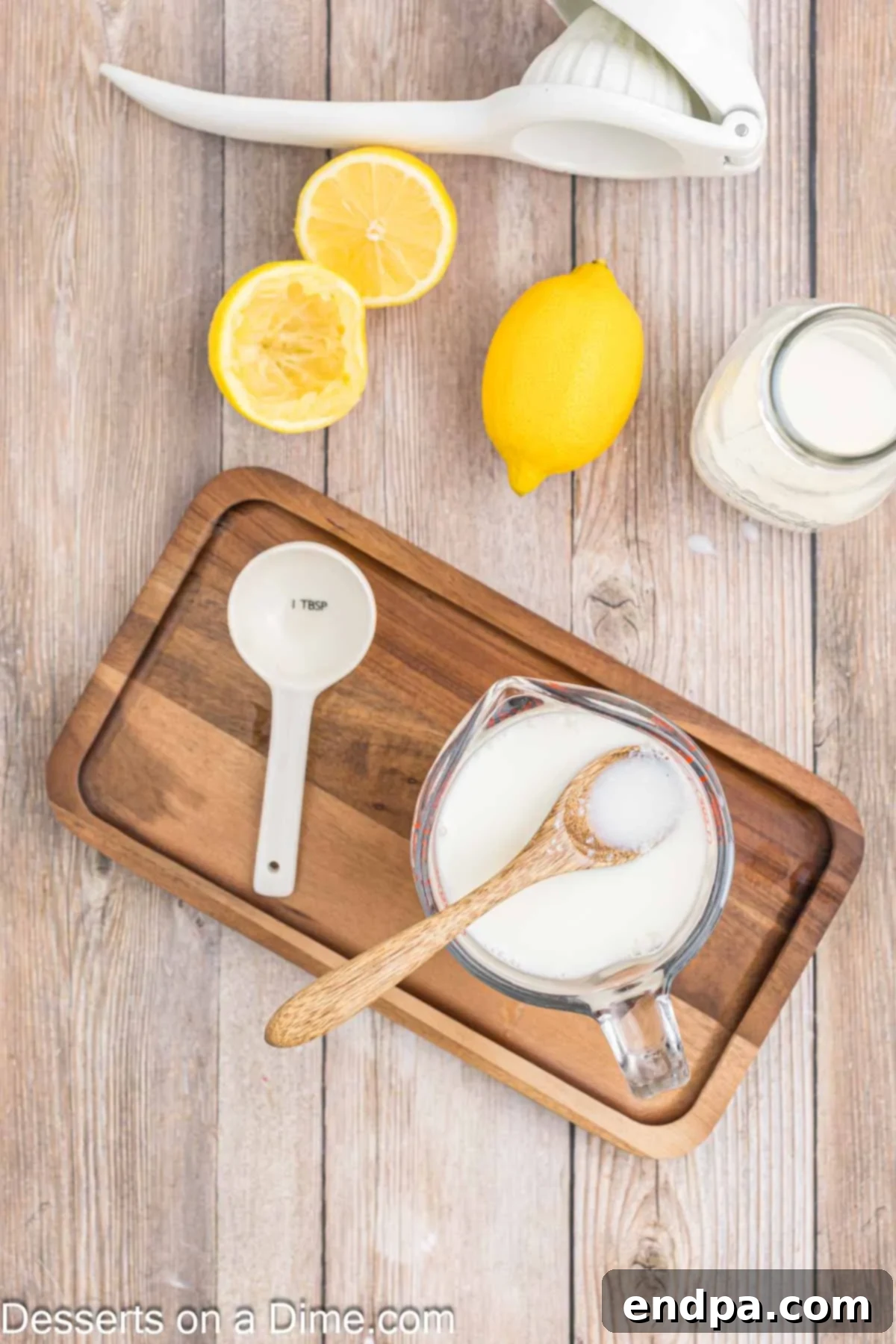
Step 3. Gentle Stir: Using a spoon or small whisk, gently stir the mixture for a few seconds. This ensures that the lemon juice or vinegar is thoroughly distributed throughout the milk, allowing the curdling process to occur evenly. Avoid over-stirring, as a quick mix is all that’s needed.

Step 4. Let it Rest and Thicken: Allow the mixture to sit undisturbed at room temperature for approximately 10 minutes. During this time, the acid will curdle the milk, causing it to thicken slightly and develop small curds. You’ll observe a change in consistency. After 10 minutes, give it another quick stir. The liquid will now have a texture much like that of traditional buttermilk, ready for use. Pour it into a mason jar or other airtight storage container if not using immediately.
Your homemade buttermilk is now ready to transform your culinary creations! You can use it right away in any recipe that calls for buttermilk, or refrigerate it for later use. For a slightly tangier flavor, you can let the mixture sit for up to 20-30 minutes, but 10 minutes is usually sufficient to achieve the ideal taste and texture for most recipes.
Tips for Perfect Homemade Buttermilk
While making buttermilk is straightforward, a few tips can help you achieve the best results every time:
- Temperature Matters: Using milk that is closer to room temperature can sometimes speed up the curdling process slightly. Cold milk will still work, but it might take a minute or two longer to thicken.
- Quality of Ingredients: Fresh milk and freshly squeezed lemon juice will always yield the best flavor. While bottled lemon juice works, fresh offers a brighter tang.
- Don’t Expect Extreme Thickness: Homemade buttermilk made with this method won’t be as thick as some commercial cultured buttermilks, which often contain thickeners or are fermented differently. It should be slightly thicker than regular milk with visible small curds.
- Consistency Check: If after 10-15 minutes your milk hasn’t thickened sufficiently, add another teaspoon of your acidic agent, stir, and let it sit for another 5 minutes. Some milk brands or types may require a little extra push.
- Experiment with Acids: While white vinegar is very neutral, apple cider vinegar can lend a subtle, pleasant fruity undertone. For specific recipes, this can be a nice enhancement.
- Scaling Up or Down: This method is easily scalable. Need half a cup? Use 1.5 teaspoons of acid and fill to the ½-cup mark with milk. Need two cups? Use 2 tablespoons of acid and fill to the 2-cup mark.
With these tips, you’ll be a buttermilk making pro in no time, always ready to whip up this essential ingredient whenever a recipe calls for it.
Buttermilk Substitutes
While making your own buttermilk is simple, sometimes you might be out of lemon juice or vinegar, or simply looking for an alternative. Here are a few common buttermilk substitutes, each with its own benefits:
- Milk + Cream of Tartar: For every 1 cup of milk, whisk in 1 ¾ teaspoons of cream of tartar. Let it sit for 5-10 minutes until slightly thickened. Cream of tartar is a dry acid, so it’s a great pantry staple.
- Milk + Yogurt: Whisk ¼ cup plain yogurt (or kefir) with ¾ cup milk. This creates a slightly thicker, tangier substitute. Ensure the yogurt is plain and unsweetened.
- Milk + Sour Cream: Similar to yogurt, whisk ¼ cup sour cream with ¾ cup milk until smooth. This will yield a rich and tangy substitute.
- Vegan/Dairy-Free Buttermilk: Combine 1 cup of dairy-free milk (almond, soy, oat, or coconut milk) with 1 tablespoon of lemon juice or apple cider vinegar. Let it sit for 5-10 minutes until it curdles. This is an excellent option for those with dietary restrictions.
While these substitutes can work in a pinch, remember that homemade buttermilk using milk and an acid will provide the closest approximation to store-bought cultured buttermilk in terms of consistency and leavening power.
Frequently Asked Questions
Like its store-bought counterpart, homemade buttermilk has a relatively short shelf life. The longevity depends heavily on the freshness of the milk used and proper storage. When kept in an airtight container and properly refrigerated, homemade buttermilk will typically last for about 1 to 2 weeks. For longer storage, it can be frozen in ice cube trays or small containers for up to 3 months. Thaw it in the refrigerator before use and give it a good stir, as it may separate slightly.
Buttermilk is a superstar in baking, contributing significantly to moisture, tenderness, and leavening. Its acidity reacts with baking soda, producing carbon dioxide that creates a light, fluffy texture in items like pancakes, waffles, muffins, quick breads, and cakes. It also adds a wonderful, subtle tang that complements sweet flavors beautifully. For recipes calling for baking powder, buttermilk helps balance the flavor and activate the leavening for an even rise. Always mix it gently to avoid over-activating the gluten.
Buttermilk’s utility extends far beyond baking into the realm of savory cooking. It makes an excellent marinade for meats like chicken and pork, tenderizing them while imparting a lovely tang. It’s the secret ingredient in many creamy salad dressings (like classic ranch), dips, and even gravies, providing a rich, smooth base. Use it to create flavorful batters for fried chicken or onion rings, giving them a delightful crispness and depth. It can also be incorporated into mashed potatoes for extra creaminess or added to smoothies for a tangy, healthy boost. The possibilities are truly endless!
Absolutely! Making dairy-free buttermilk is simple and yields fantastic results for those with dairy allergies or preferences. Simply substitute traditional cow’s milk with your favorite non-dairy milk alternative, such as almond milk, soy milk, oat milk, or coconut milk (the beverage type, not canned). Then, proceed with the same method, adding 1 tablespoon of lemon juice or apple cider vinegar per cup of non-dairy milk. Let it sit for 5-10 minutes, and it will curdle beautifully, ready for your dairy-free recipes!
Traditional buttermilk is the thin, slightly acidic liquid left after churning butter from cultured cream. It’s naturally fermented and low in fat. Cultured buttermilk, which is what we typically find in stores and make at home (using milk and an acid), is made by adding bacterial cultures to low-fat or skim milk, causing it to ferment and thicken. Both share a similar tangy flavor and acidity, but cultured buttermilk is generally thicker and more consistent, making it widely preferred for baking and cooking.
If your buttermilk doesn’t seem to be curdling after 10-15 minutes, there could be a few reasons. Firstly, ensure your milk isn’t ultra-pasteurized, as it sometimes struggles to curdle properly. Secondly, check that your acidic agent (lemon juice or vinegar) is fresh and potent. You can try adding another teaspoon of acid, stirring gently, and allowing it to sit for an additional 5-10 minutes. A slight thickening with visible small curds is what you’re looking for, rather than a dramatic solidification.

Recipes with Buttermilk
Now that you’re a buttermilk expert, eager to use your homemade creation, here are some fantastic recipes where buttermilk truly shines. Get ready to enjoy the moist, tender, and flavorful results that only buttermilk can deliver:
- Confetti Cupcakes
- Orange Crush Cupcakes
- Green Velvet Cupcakes
- Red Velvet Sheet Cake
- Lime Jell-O Poke Cake
- Banana Bundt Cake
- Fluffy Buttermilk Pancakes
- Crispy Buttermilk Fried Chicken
- Tangy Buttermilk Ranch Dressing
- Tender Buttermilk Biscuits
Now that you know what buttermilk is, why it’s so amazing, and how incredibly easy it is to make at home, there’s no excuse not to try it! Whether you’re whipping up a batch for baking or cooking, you’ll love the distinctive flavor and texture it brings to your dishes. Give it a try today, and don’t forget to leave a comment and star rating once you experience the magic for yourself! Happy cooking!
